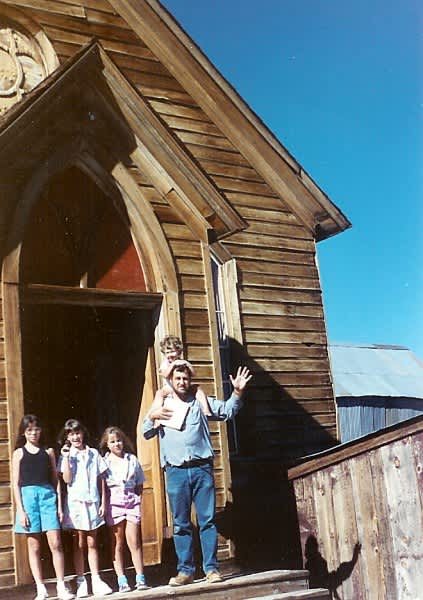Exploring America’s Ghost Towns: A Unique Outdoors Pursuit
Don Moyer 09.14.12

Bodie, a ghost town on the very east border of California, is a delightful experience. It is a ghost town that is still largely intact and left just as it was when its miners abandoned it. I actually knew a guy who may have been one of the last people educated in the Bodie school. Jack was the son of a mining engineer who worked in Bodie just about the time the gold ran out. There are still whiskey bottles in the old saloons, wagons in the livery stables, and coffins in the undertaker’s parlor. It really tugs at your heart when you see a child’s coffin and it hits you that there were real families with mothers, fathers, and kids who lived, played, and died there.
One of the fringe benefits of constantly searching for the next undiscovered fishing spot or secret hunting hotspot is that along the way you stumble across ghost town and mining camps that were scattered all over the U.S. It seems crazy, but ghost towns turn up almost anywhere. As I was growing up in Tracy, California, almost everyone had patios, barbeques, and walkways made from Carnegie Bricks. Carnegie had huge brick factories and Tile plants that operated till the clay ran out. Folks from nearby towns would drive their truck out to Carnegie and fill it with bricks from the old collapsed brick buildings. As kids we delighted in exploring old mines and abandoned lumber camps. They were living history lessons and with a little imagination you found yourself back in the 1850s along with the loggers and miners.
I recall a giant railroad trestle that spanned the junction of two Sierra Nevada creeks. It must have been 50 feet above the creek and was still intact with supports, ties, rails and even water tanks that used to fill the steam engines. My brother and I would play for hours beneath the spout of a redwood water tank as though it was our own personal shower. The coal mine at Tesla was about 5 miles west of Carnegie and was a huge complex of tunnels, shafts and drifts dug by the miners in search of fuel for the trains and ships that powered the west. We would wander around inside that mountain for hours, and amazingly we never got killed or even seriously hurt, although there was no doubt that our moms truly earned their grey hairs.

For the most part, the ghost towns that remain are now state parks and pretty carefully preserved and regulated. That is both good and bad news. You can’t walk into the firehouse of a ghost town anymore and roll the horse-drawn fire engine out into the street to have your picture taken for posterity. Now you get to look at the old relic through a plexi-glass box so that curious little hands can no longer feel the rough grain of the weathered sides. While the relics are preserved in their nice displays you can’t blow off the dust and smell the inside of an old dynamite box. Kids can no longer explore the Tesla mines because they might disturb the bat habitat. I know such rules are necessary to save the old treasures, but somehow today’s kids are missing out and they don’t even know it.
Believe it or not, there are still ghost towns, mining camps, and logging camps, that are lost in the mists of time. They are still out there and you can still find them once in a rare while if you try. I can take you to a mine today that still has a working ventilation system made from a washtub ingeniously turned into a weathervane that still rotates into the wind and blows fresh air deep into the mine. The creaking of that washtub weathervane is a haunting song that still sings in the desert wind. There are mine tunnels out there complete with ore cars that still roll on their tracks and the rock face of the mine still has a star drill waiting for the next sledge,mer blow to deepen the hole for the dynamite charge that will never come.
If you really try, you can still find these portals to the past. With a little research, a lot of miles on your 4-wheel drive, and a lot of wear on your shoes, there are still ghost towns waiting for you. Be advised though, the ghost town bug is addicting. Once you start, you can’t quit. Where do you start?
Why at the local library of course. Check out books on the ghost towns of your region. While I explore ghost towns and logging camps of California, Nevada and Arizona, you can explore the coal mines in Pennstlvania, Ohio, and West Virginia, or the abandoned logging camps and iron mines of Michigan. Let your imagination run wild, read everything you can find. Consult your reference librarian at your local library, they love to help and they love a challenge. Once you’ve studied possible locations, wait for a sunny weekend and go off in search of your very own El Dorado.

